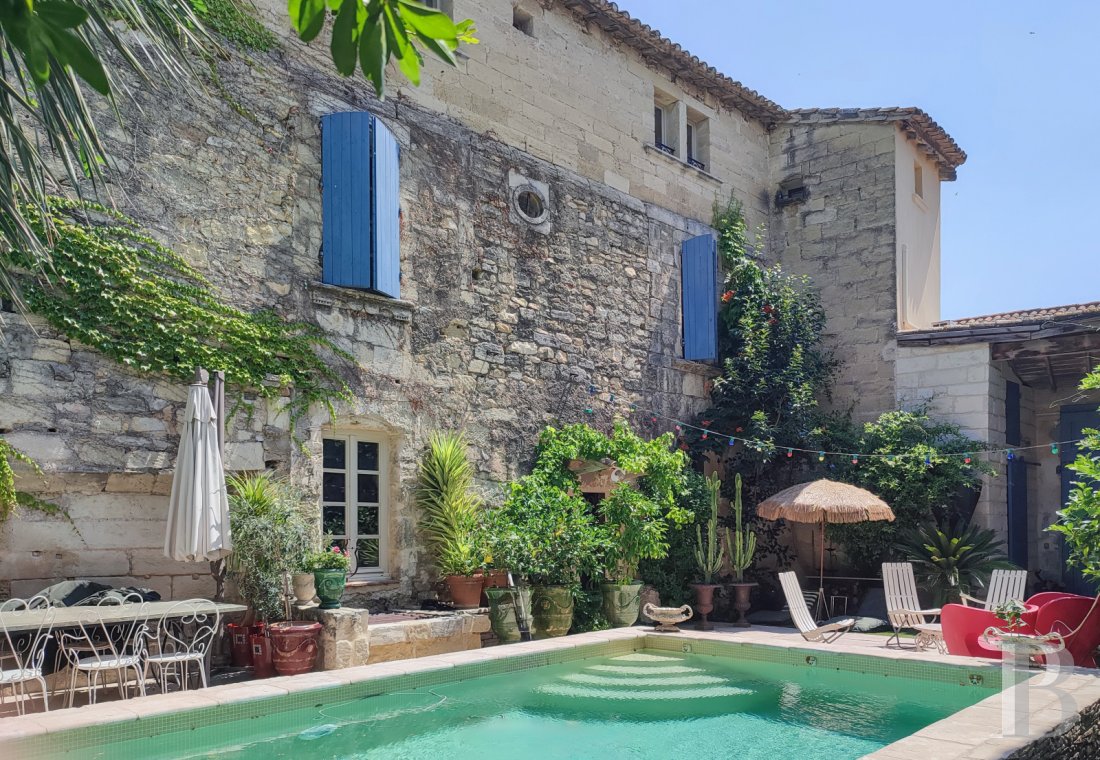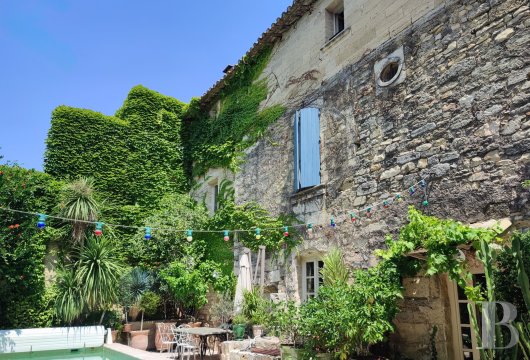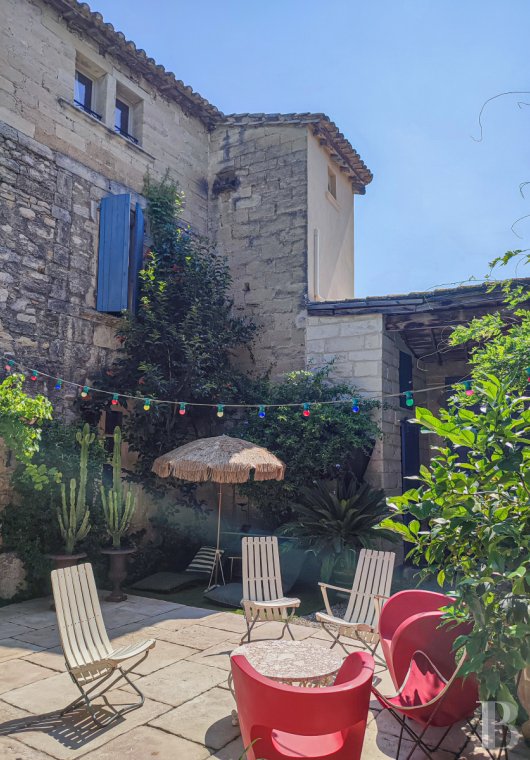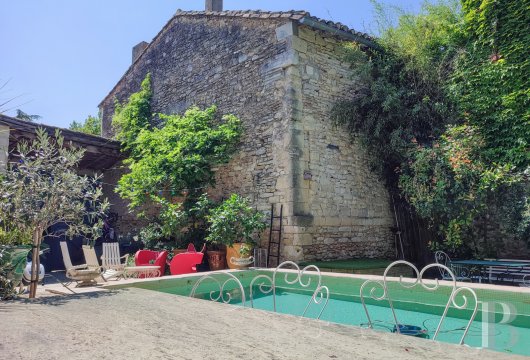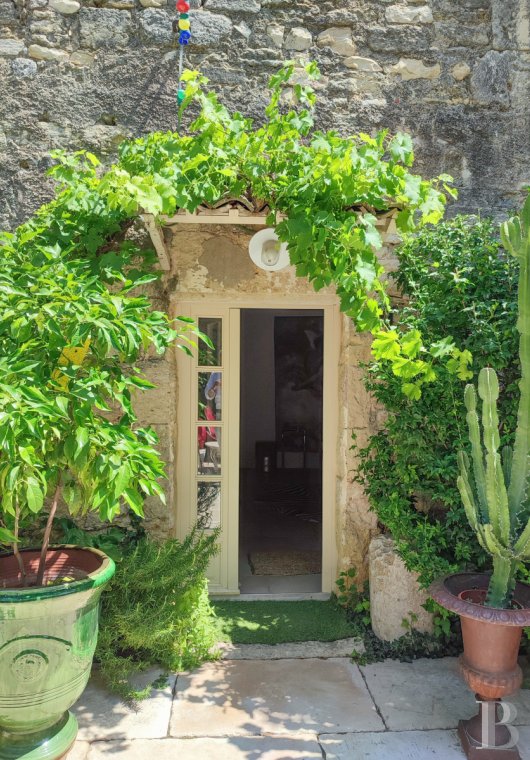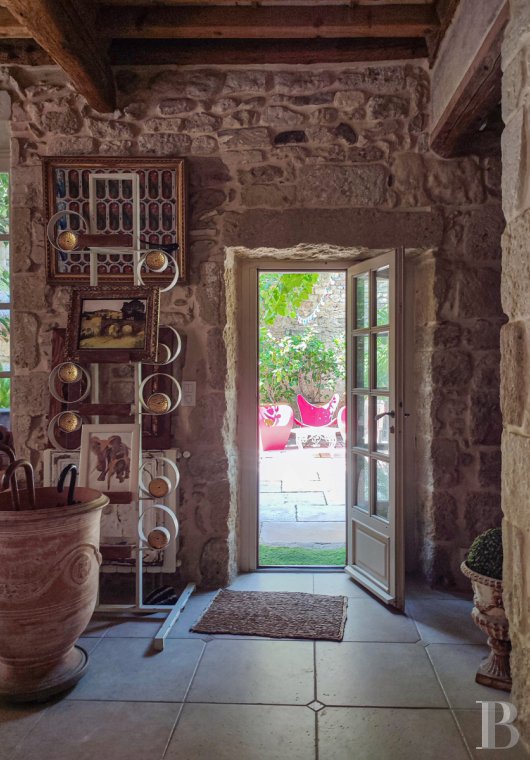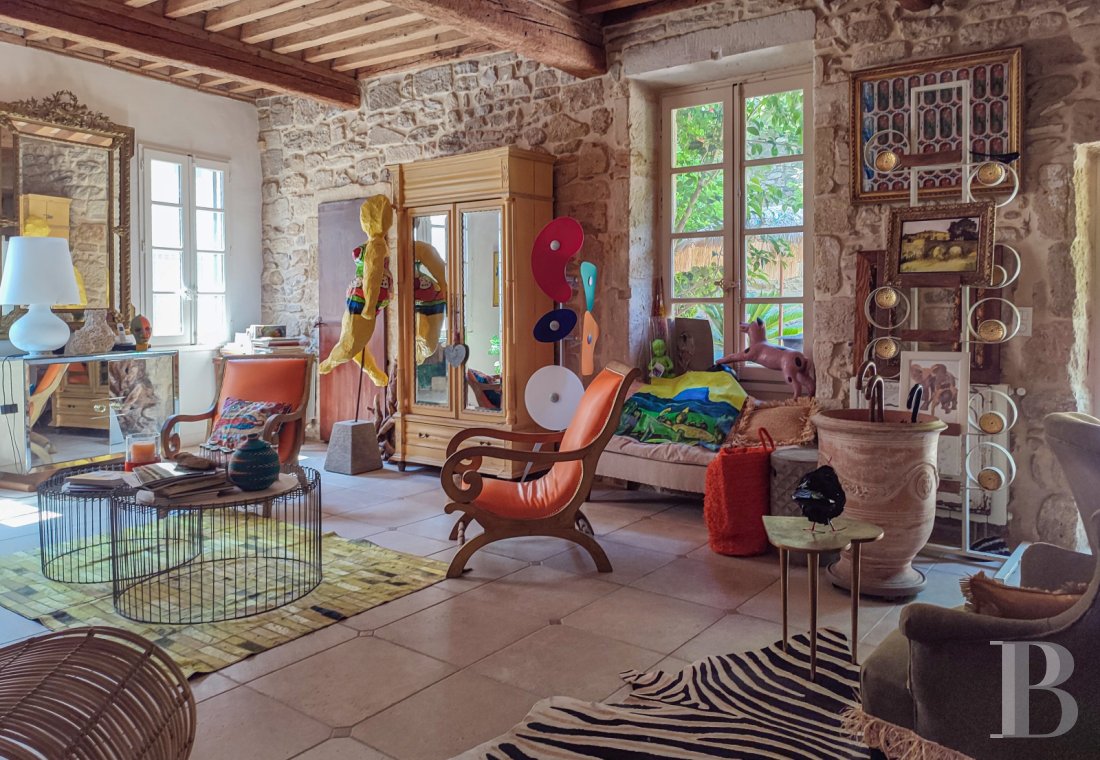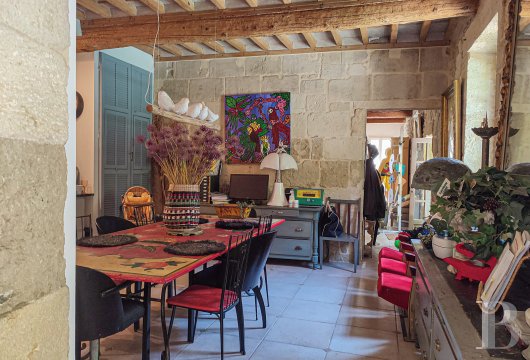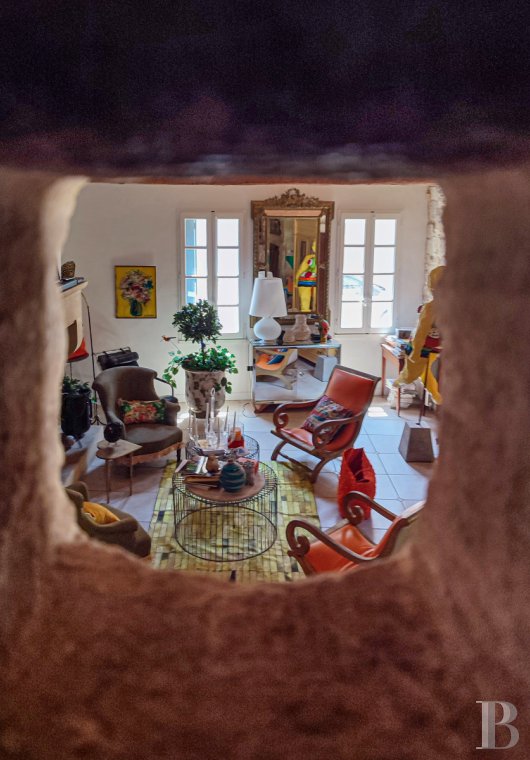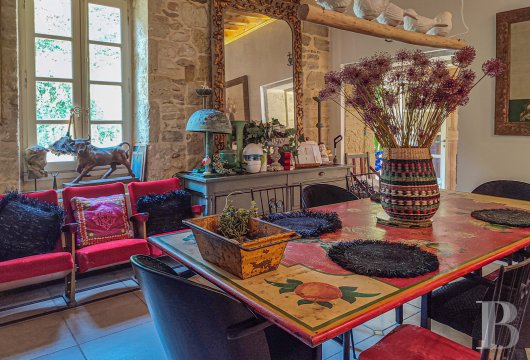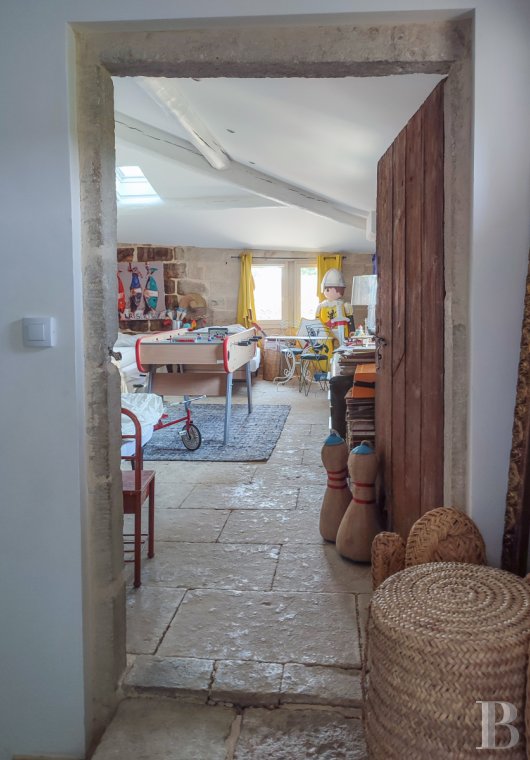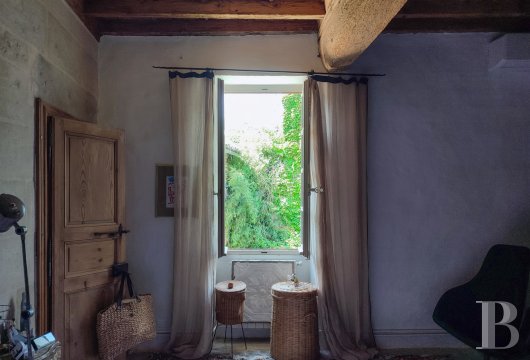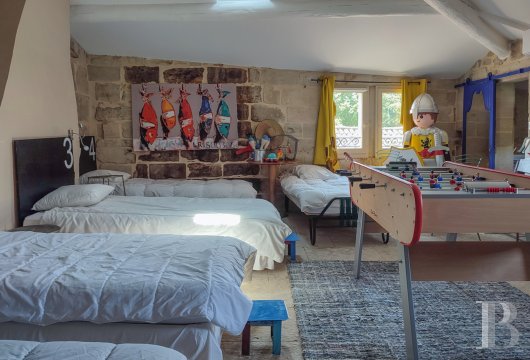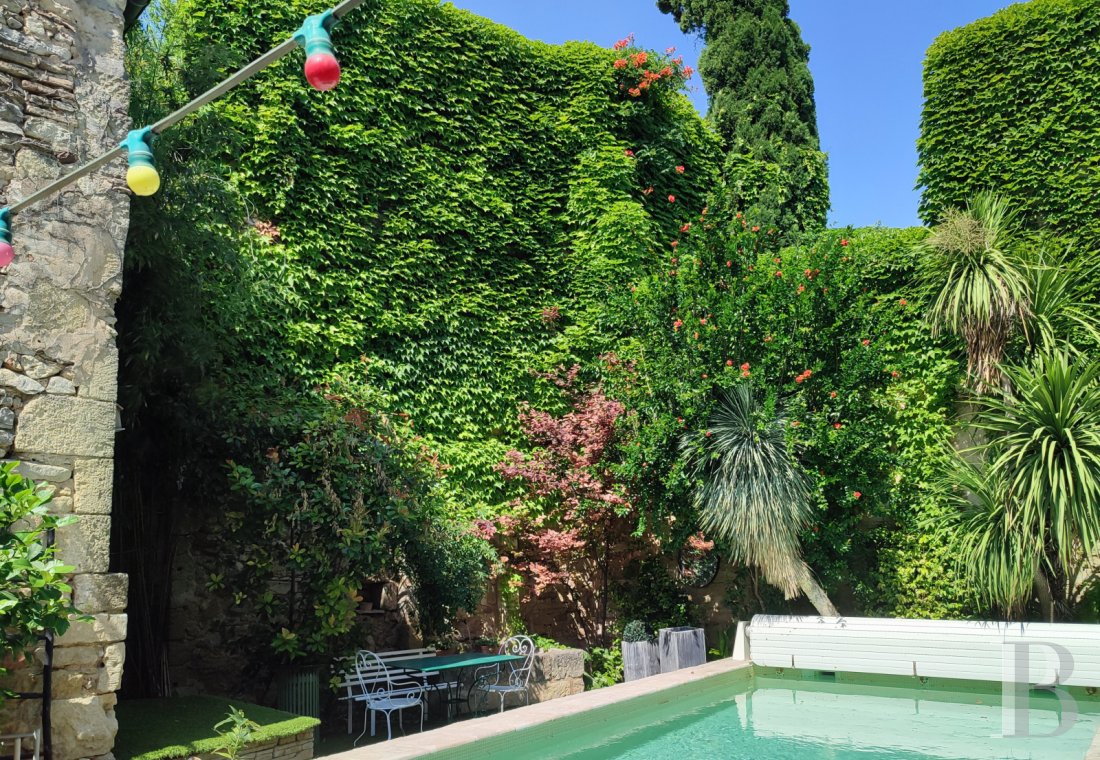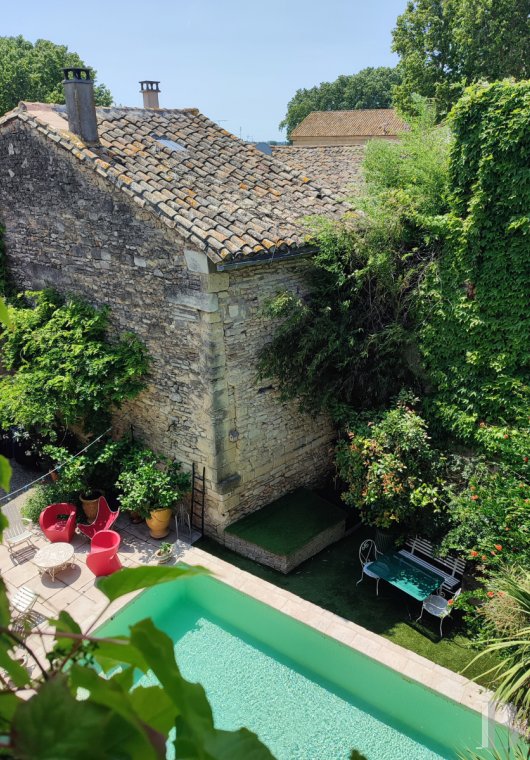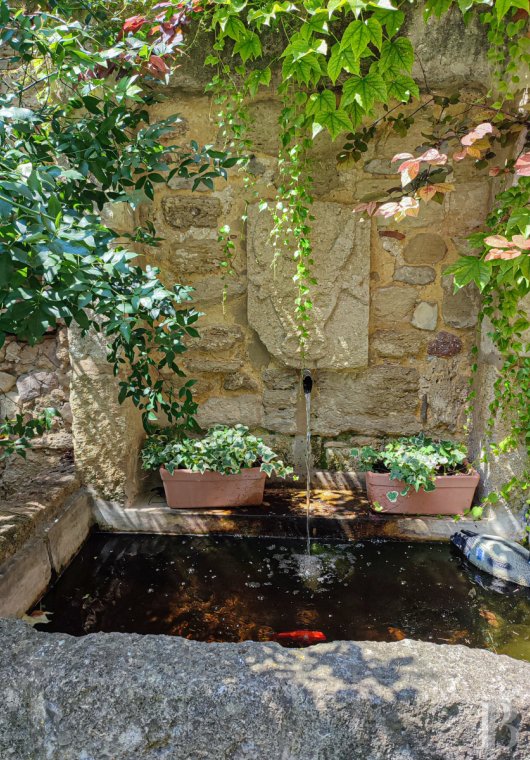with swimming pool in the south of the Gard department

Location
30 minutes from Nîmes train station, in the Montpellier-Nîmes-Arles triangle, at the confluence of two rivers, lies a typical southern Gard village, surrounded by a diversity of unique, distinctively Camargue landscapes: marshes and "sansouïres" (Mediterranean ecosystems), meadows and vineyards. Known as part of the "Costières de Nîmes" appellation and for its bull-fighting tradition, it fully deserves the title of " Capital of the Petite Camargue".
Nearly 2,500 people live in this area, famous for its exceptional natural heritage. Bordered by vast pastures and vineyards, reminders of its agricultural roots, the village also boasts a rich historic centre with listed arenas and a Romanesque church, located close to the house.
30 minutes from Montpellier TGV station and 20 minutes from the medieval town of Aigues-Mortes.
Description
Stepping through a doorway part of the discreet carriage entrance, visitors immediately enter a different world.
They discover a stone-paved, unoverlooked courtyard, where the Virginia creeper and the many pots with different plant varieties vie with the swimming pool for the privilege of embellishing and refreshing the space.
In front of the courtyard rises the main facade of a 17th-century building. Spanning three storeys, its thick walls harmoniously marry rough stone and dressed stone, bearing witness to successive transformations over time.
The south-facing house has a full-height eastern wing, whose street facade matches the frontage to the right of the entrance door. The many windows in the southern elevation facing the courtyard reveal the reception rooms on the ground floor and the numerous bedrooms on the two upper floors. The sheer number of rooms shows that the building was clearly intended to host and reunite family and friends.
The house
The three-storey house has a floor area of approx. 243 m² and a simple rectangular layout. A central stone staircase divides each floor into two sections of unequal size, with the western section taking up slightly more than half of the floor area.
The interior walls of the first two storeys on the south side are of exposed, light-coloured natural stone, while most of the walls on the north side, abutting another house, are of dressed stone of the same colour. The mineral character of the ensemble is complemented by the floors, which alternate between terracotta, cabochon tiles and grey flagstones.
The ground floor
Like all the other levels of the house, the ground floor is divided into two main sections separated by an almost central staircase. To the east, a living room opens onto the courtyard to the south via a glass door flanked by a tall window. Opposite this door, a large fireplace forms the centrepiece of the room. To the right, two large windows overlooking the street brighten up the space. Finally, a door leads to a hallway that is currently used for storage. The cherry-wood coloured ceiling, with its exposed beams and joists, bears witness to the traditional style of southern architecture.
The western part of the ground floor comprises a vast open-plan kitchen and dining room. Only the central staircase separates this area from the living room. A passageway at the western end of the house provides a second access to the kitchen and serves the terrace, the lavatory and a large windowless room now used as a laundry and storage area.
The first floor
The upper floors are accessed via a quarter-turn staircase running north-south, framed by two stone walls and bordered by a simple wrought-iron handrail.
The master bedroom is at the top of the stairs, to the right of the landing. This spacious room has its own bathroom with double washbasin and separate lavatory, as well as a large closet. In keeping with the general logic of the house, it faces south and is bright and airy all year round. It has traditional flagstone flooring and a beamed ceiling with exposed joists.
The left-hand side of the floor comprises two bedrooms in a row, with grey flagstone floors. The first, of modest size, is currently used as a large study; it has a window that provides abundant light and a very pleasant view over the courtyard. The second, larger bedroom has a private shower room with toilet in the eastern projection of the house.
The second floor
The central staircase provides access to the top level, half of which is currently dedicated to children. The floors of the various rooms are tiled with flagstones and there are sloping ceilings. The landing in the eastern part of the level leads to a very large bedroom, measuring over 40 m², which can sleep six children and is also used as a playroom. It has a shower room with toilet. The white-painted exposed beams of the sloping ceiling and the many windows bathe the room in light and create a precious sense of space.
Finally, in the western part of this level, there is a lodging for guests, whose structure and volumes are modelled on those of the main bedroom on the first floor. This bedroom has its own bathroom with toilet facilities, as well as a large dressing room.
The courtyard
A three-storey facade featuring predominantly exposed stone faces a paved terrace of around 150 m². As the house is situated in the middle of a village, the courtyard is bordered by stone walls without windows belonging to neighbouring houses.
Refreshed by an abundant Virginia creeper and a large 25 m² swimming pool around which the space is organised, this unoverlooked courtyard is an essential element of the charm and enjoyment of the house, where tranquillity remains the undisputed master.
A well and a fishpond complete the property.
Our opinion
Situated in the middle of a village, this authentic residence, designed to withstand with natural means the demands of a sunny environment, perfectly captures the atmosphere of southern France. Light colours, thick stone walls, wooden shutters, cleverly tamed orientation and vegetation providing a balance of light and shade, everything here conveys the gentlest aspects of life in the South of France.
The house has been lovingly restored, with exposed stone walls and beamed ceilings that add to the comfort of its many rooms. Its generous volumes and location, both close to Montpellier and far from mass tourism, make it ideal for welcoming children, grandchildren and friends, in the peace and quiet of a secluded setting where life is at your own discretion.
798 000 €
Fees at the Vendor’s expense
Reference 583683
| Land registry surface area | 255 m2 |
| Main building surface area | 243 m2 |
| Number of bedrooms | 5 |
NB: The above information is not only the result of our visit to the property; it is also based on information provided by the current owner. It is by no means comprehensive or strictly accurate especially where surface areas and construction dates are concerned. We cannot, therefore, be held liable for any misrepresentation.

